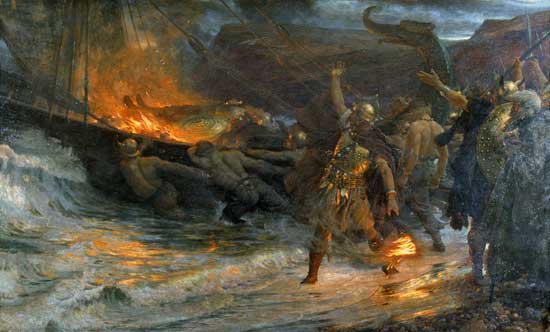Donna Trembinski, St. Francis Xavier University, and Benjamin Bryce, University of British Columbia
The popularity of the restaurant Medieval Times, with its ten locations in Canada and the United States so far, is one of many examples of the enduring place that (mis)representations of medieval Europe still have in modern imaginations. Exploring how the medieval world is understood and depicted in the modern is the relatively new subdiscipline of medievalism studies. As David Matthews argues in Medievalism: A Critical History, the exploration of how the Middle Ages was perceived in later eras of history began almost as soon as the Middle Ages ended. But as a modern sub-discipline of the study of medieval culture, interest in medievalism began to grow in the last quarter of the twentieth century. Engagement with the topic was initially fuelled by other disciplinary explorations of medieval inspired art and literature, like Walter Scott’s Ivanhoe (published in 1819) and Francis Dicksee’s many paintings inspired by fantasies of the Middle Ages (See Fig. 1). But by the turn of the twenty-first century, conferences and publications were being dedicated to the broad theme of medievalism.
Figure 1. Sir Francis Dicksee’s Funeral of a Viking

Source: Wikimedia Commons
Along with this interest in how modern cultures represented the medieval past came the growing realization that various groups used imaginary pasts to support present exclusionary politics. In terms of medievalism, amongst such groups, an idealized medieval past was presented as homogenously white, patriarchal and Christian. Scholars like Mary Rambaran-Olms, Dorothy Kim and Johnathan Hsy, Adam Miyashiro and Helen Young and many others noted this, while also arguing that such problematic ideas had been supported by the disciplines of medieval studies and history themselves which have a legacy of colonial and racist methodologies and practices.
Yet, nostalgic misrepresentations of the distant past is a global phenomenon. The interest in Chinese dragons, Japanese samurai, ancient Egypt, or fallen Indigenous empires in the Americas share many features with the problematics of medieval nostalgia outlined above. In all cases, people living in the same space as those in the distant past and people living elsewhere in the world wax nostalgic for an incomplete vision of the past.
The five contributors to this forum, focusing on China, Latin America, the United States, Egypt, and Canada show the global nature of what is usually discussed as medievalism. Julie Gibbings shows how accusations of medieval, feudal, and backwardness have shaped political discourse in Latin America since independence and fuel ongoing policies toward and ideas about Indigenous peoples and perceptions (whether self- or external) about development. Sara Ann Knutson zooms in on the recent Disney superhero series, Moon Knight, as one of so many possible examples about the nostalgic misrepresentation of ancient Egypt and archaeology and their implications for how North Americans and Europe interact with Egypt, the Arab world, and other non-European places. In her essay, Donna Trembinski shows how a curious fixation on medieval European traditions in higher education continue to shape governance structures in Canadian universities. Far more than quaint tradition, the medieval rituals regarding disciplinary autonomy, fraternities, and oral exams also mask the nostalgic desires of university communities. Shoufu Yin looks at a range of movies and video games, which show a mix of North American and East Asian representations of the past, to ask how both the producers and consumers of these contemporary media Orientalize and fetishize the imperial past and in particular women in war. In his article, Robert Zecker shows how the ongoing nativist bent in US discussions about immigration show an evolving nostalgia for a distant past where immigration and a pure America were apparently always in harmony.
Combined the contributors to this forum, the first of the Journal of the CHA’s new online forum, decentre Europe and show the global nature of how nostalgic misrepresentations shape our present.